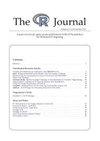COVID-19大流行期间超额死亡率估算和可视化工作流程
IF 1.1
4区 计算机科学
Q3 COMPUTER SCIENCE, INTERDISCIPLINARY APPLICATIONS
引用次数: 0
摘要
与COVID-19相关的死亡估计数低估了大流行对死亡率造成的负担,因为它们存在完整性和准确性问题。过高死亡率是一种流行的替代方法,因为它将观察到的死亡人数与未发生大流行的预期死亡人数进行比较。预计死亡人数取决于人口趋势、温度和时空格局。除此之外,在审查国家内部的趋势和不同公共卫生政策的有效性方面,需要高度的地理分辨率。在本教程中,我们提出了一个使用R的工作流,用于在高地理分辨率下估计和可视化超额死亡率。我们展示了一个案例研究,估计2020年意大利的超额死亡人数。所建议的工作流可以快速实现,并且允许组合不同的模型,并根据年龄、性别和空间位置等因素显示聚合的结果。这使其成为在线监测大流行负担和及时制定政策的特别强大和有吸引力的工作流程。本文章由计算机程序翻译,如有差异,请以英文原文为准。
A Workflow for Estimating and Visualising Excess Mortality During the COVID-19 Pandemic
COVID-19 related deaths estimates underestimate the pandemic burden on mortality because they suffer from completeness and accuracy issues. Excess mortality is a popular alternative, as it compares the observed number of deaths versus the number that would be expected if the pandemic did not occur. The expected number of deaths depends on population trends, temperature, and spatio-temporal patterns. In addition to this, high geographical resolution is required to examine within country trends and the effectiveness of the different public health policies. In this tutorial, we propose a workflow using R for estimating and visualising excess mortality at high geographical resolution. We show a case study estimating excess deaths during 2020 in Italy. The proposed workflow is fast to implement and allows for combining different models and presenting aggregated results based on factors such as age, sex, and spatial location. This makes it a particularly powerful and appealing workflow for online monitoring of the pandemic burden and timely policy making.
求助全文
通过发布文献求助,成功后即可免费获取论文全文。
去求助
来源期刊

R Journal
COMPUTER SCIENCE, INTERDISCIPLINARY APPLICATIONS-STATISTICS & PROBABILITY
CiteScore
2.70
自引率
0.00%
发文量
40
审稿时长
>12 weeks
期刊介绍:
The R Journal is the open access, refereed journal of the R project for statistical computing. It features short to medium length articles covering topics that should be of interest to users or developers of R.
The R Journal intends to reach a wide audience and have a thorough review process. Papers are expected to be reasonably short, clearly written, not too technical, and of course focused on R. Authors of refereed articles should take care to:
- put their contribution in context, in particular discuss related R functions or packages;
- explain the motivation for their contribution;
- provide code examples that are reproducible.
 求助内容:
求助内容: 应助结果提醒方式:
应助结果提醒方式:


